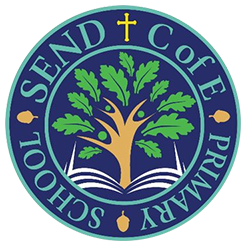Year 6 White Rose Overview
Topics covered in Year 6 White Rose Maths scheme of learning
Year 6 autumn term
- Place value
- Addition, subtraction, multiplication and division
- Fractions A
- Fractions B
- Converting units of measurement
Year 6 spring term
- Ratio
- Algebra
- Decimals
- Fractions, decimals and percentages
- Area, perimeter and volume
- Statistics
Year 6 summer term
- Shape
- Position and direction
- Themed projects, consolidation and problem solving
White Rose Maths Year 6 autumn term
In the autumn block, Year 6 focuses on place value; addition, subtraction, multiplication & division; fractions and converting units of measurement.
Place value Year 6
As with all year groups, place value is the first block to be covered in the Autumn term. By Year 6, this is only a short unit of work; reading and writing numbers to 10,000,000 and exploring powers of 10.
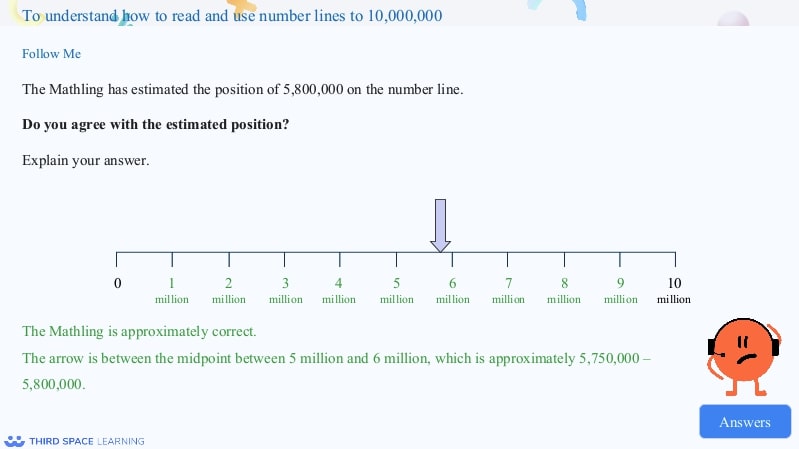
Pupils explore numbers up to 10,000,000 on a number line, including
estimating using a number line.
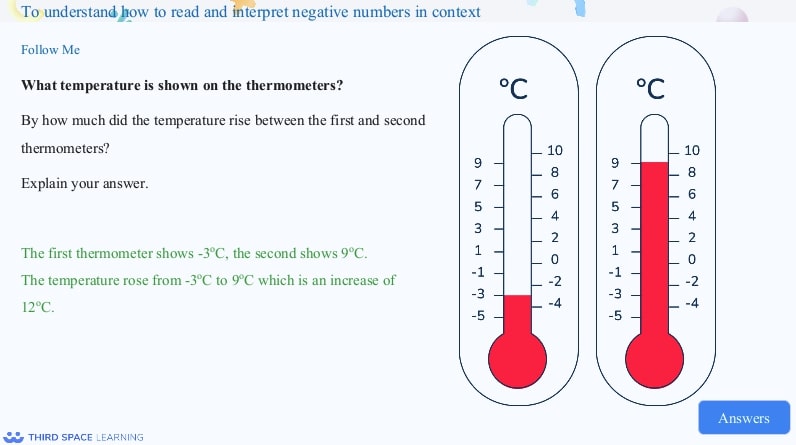
Pupils look at negative numbers in context in Year 6 place value.
Example year 6 place value questions
1. Write the following number in digits: twenty seven million, three hundred and forty eight thousand, five hundred and 6.
Answer: 27,348,506
2. Identify the value of each underlined digit
a) 73,640,328
b) 25,604,713
c) 17,394,801
Answers
a) 3 million
b) 600,000
c) 90,000
Addition, subtraction, multiplication and division Year 6
Addition, subtraction, multiplication and division is the largest block of Year 6. Unlike the other year groups, the four operations are all covered in one block, rather than being separated into two separate blocks. By this stage, pupils are expected to be confident using formal written methods for addition and subtraction. Focus is on securing confidence with long multiplication and division, and applying this knowledge to solving more complex multi-step problems. Learners also build on their understanding of factors, multiples, prime, square and cube numbers.
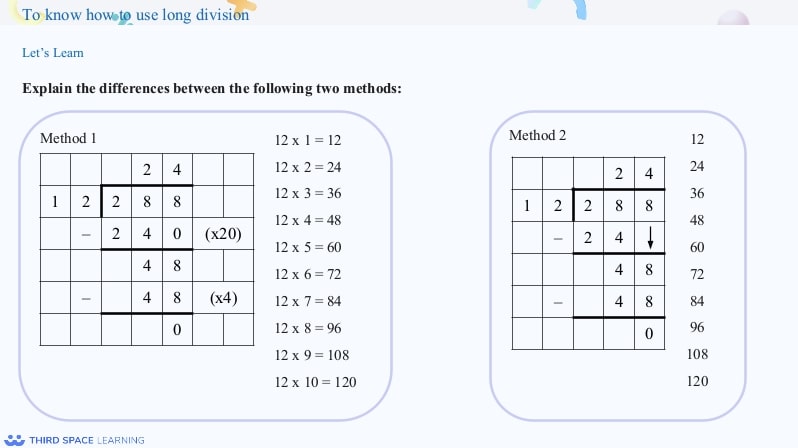
In Year 6, pupils learn long division. They can explore different methods to solve
division problems with long division.
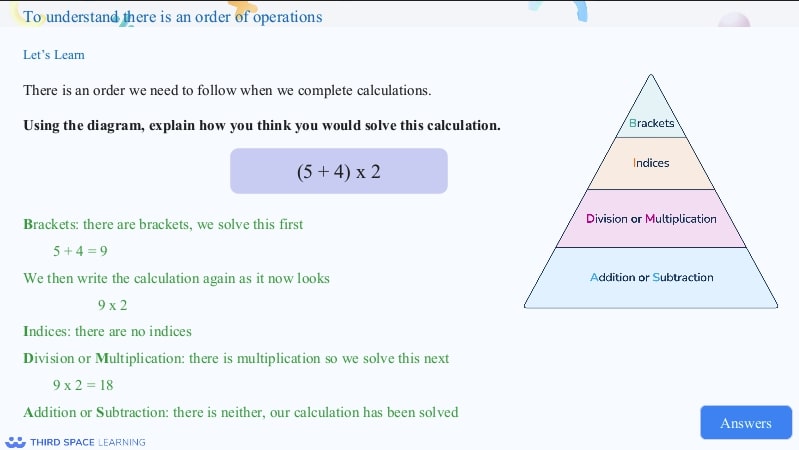
Pupils explore the order of operations in Year 6.
Example year 6 addition, subtraction, multiplication and division questions
1. 196,877 ÷ 37 =
Answer: 5,321
2. Which number is a factor of 24, but not a multiple of 8?
a) 8
b) 7
c) 10
d) 12
Answer: d) 12
Fractions Year 6
Fractions in Year 6, are also split into two blocks, with both Block A and Block B being covered in the Autumn term.
Fractions A in Year 6
Pupils continue to develop their understanding of equivalent fractions in Year 6; utilising this knowledge to be able to compare and order fractions, and add and subtract fractions and mixed numbers with different denominators.
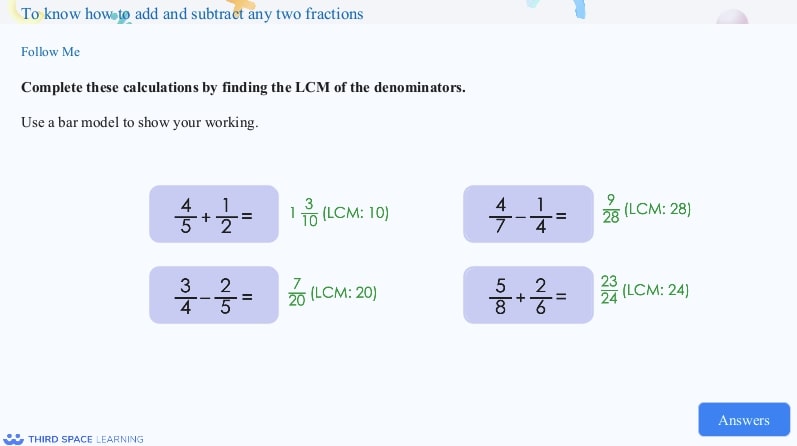
Pupils start to use the lowest common multiple to add and subtract
fractions with different denominators.
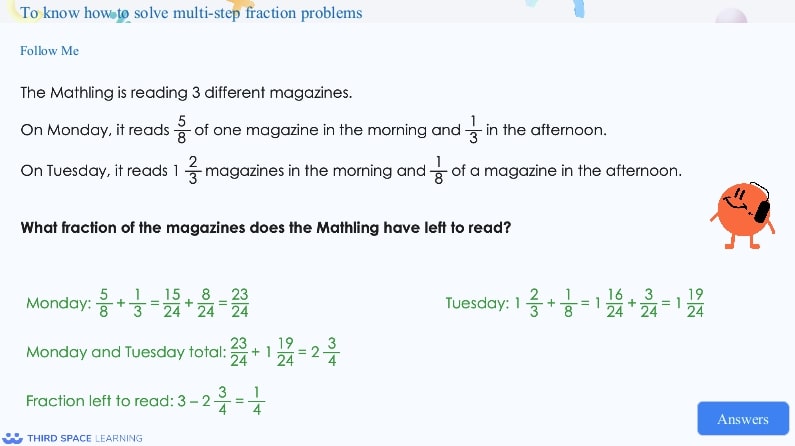
Pupils apply their understanding of fractions to solving multi-step fractions problems.
Example year 6 fractions A questions
1. Order the following fractions from largest to smallest
12,23,912,5621,32,129,65
Answer: 56,912,23,1265,129,32,21
2. 434+5412443+5124
Answer: 1011210121
Fractions B Year 6
In this second fractions block of Year 6, pupils build on the concepts introduced in Year 5; including multiplying and dividing fractions. They also continue to focus on calculating fractions of an amount
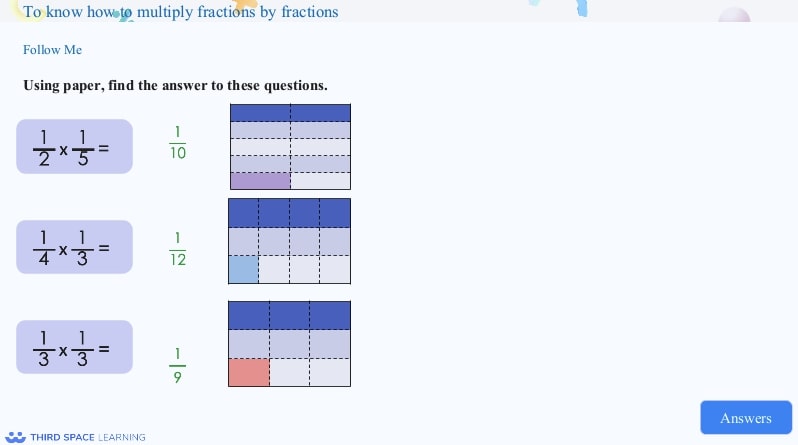
Pupils are encouraged to explore multiplying two fractions using paper to help them
understand how they get the answer.
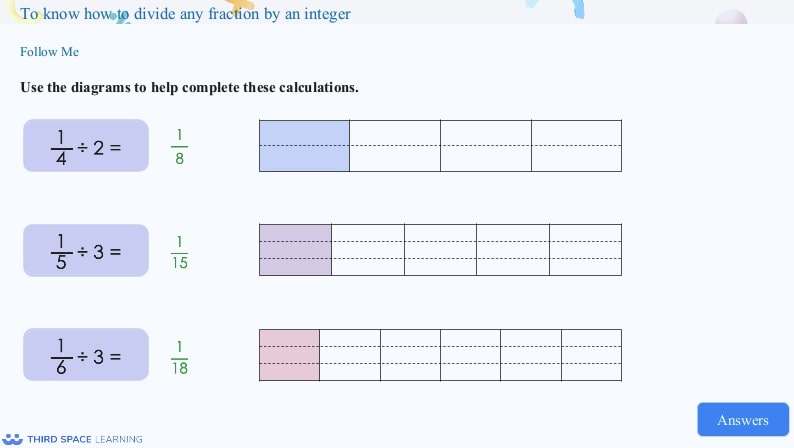
When pupils learn how to divide a fraction by an integer,
they are encouraged to represent the problem
pictorially to help understand how the answer is found.
Example year 6 fractions B questions
1. 212×314=221×341=
Answer: 618681
2. What is 7887 of 336336
Answer: 294
Converting units Year 6
Converting units is a short topic at the end of the autumn term. In this block, pupils build on their understanding of converting metric measures and are introduced to converting between metric and imperial measures (For example, between miles and kilometres).
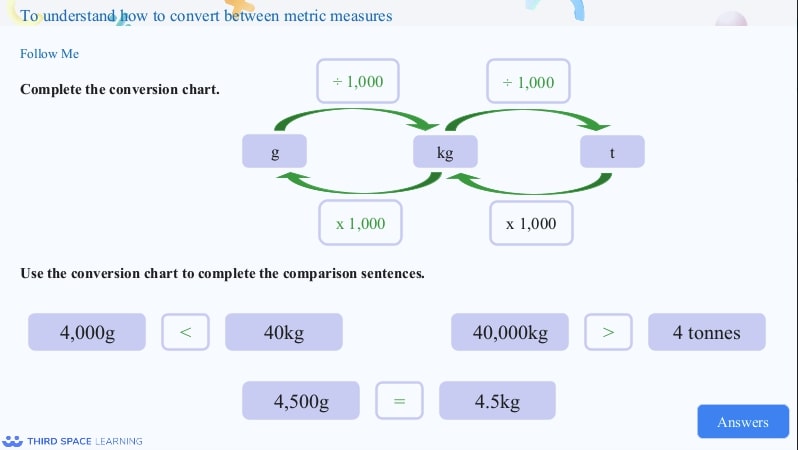
Pupils apply their understanding of multiplying by 10, 100 and
1000 to converting between metric units of measure.
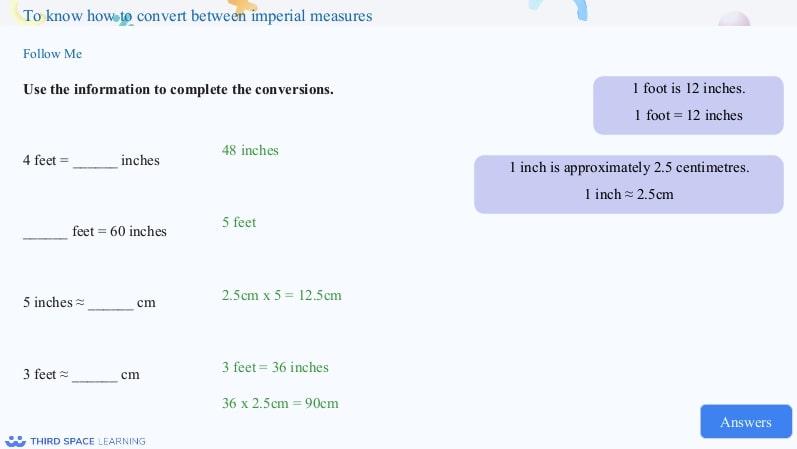
Pupils explore imperial measures in Year 6.
Example year 6 converting units questions
1. Write 7,532m as km
Answer: 7.532km
2. If 1 mile = 1.6km, how far in kilometres is 8 miles?
Answer: 12.8 miles
White Rose Maths Year 6 spring term
In the spring term term, Year 6 focuses on ratio; algebra; fractions, decimals & percentages; area, perimeter & volume and statistics
Ratio Year 6
Pupils are introduced to ratio for the first time in Year 6. In this block pupils learn to use ratio language and the symbol. They also look at the connection between ratio and fractions and scale drawings.
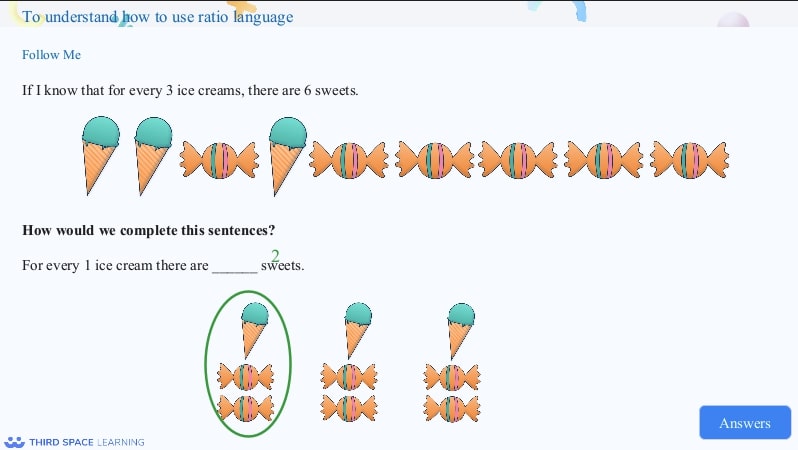
Pupils are introduced to ratio in Year 6. They explore the
language of ratio and use images to describe ratios.
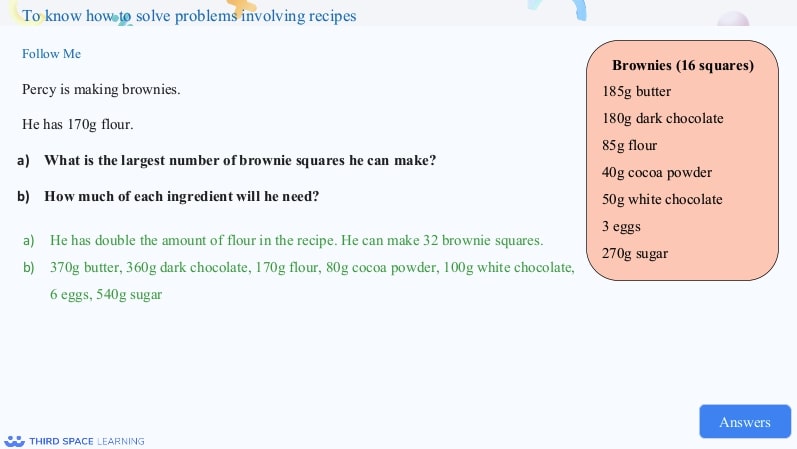
Once pupils are familiar with ratio and proportion they explore problems,
including problems involving recipes.
Example year 6 ratio questions
1. Gemma is making a necklace. The ratio of purple beads to blue beads she uses is 3:1. If she uses 5 blue beads, how many purple beads does she use?
Answer: 15 purple beads
2. The ratio of counters was 4:1 (red:yellow). If there were 20 counters altogether. How many red and yellow counters were there?
Answer: 16 red and 4 yellow
Algebra Year 6
Year 6 is the first time pupils are introduced to algebra. Students begin the block investigating 1-step and 2-step function machines, followed by forming expressions, formulae and equations. This progresses to solving 1-step, then 2-step equations.
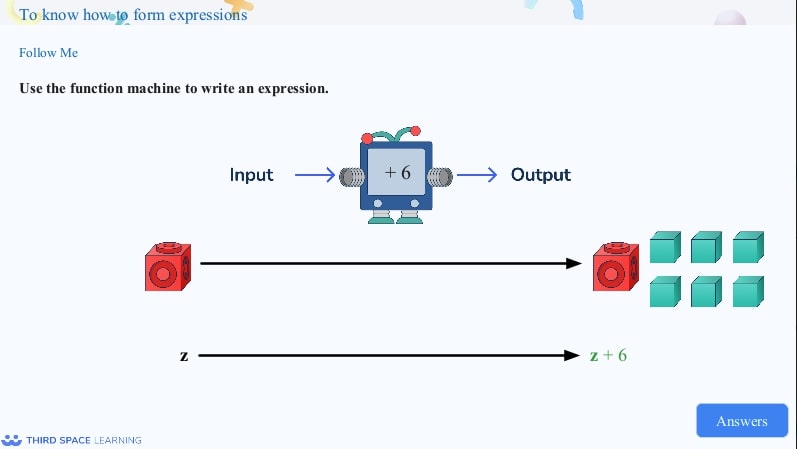
Once pupils are familiar with function machines, they use function machines
to write an expression. This is expressed using concrete resources or
pictorial representations before moving on to abstract concepts.
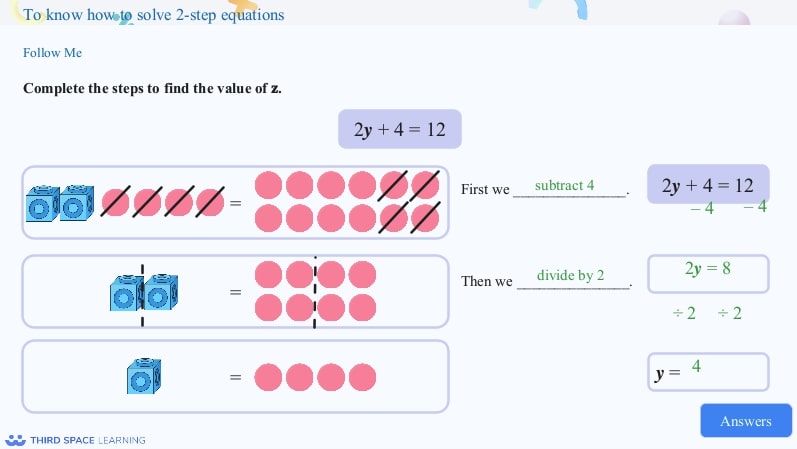
Pupils use concrete or pictorial representations to solve 1-step and 2-step equations.
Example year 6 algebra questions
1. An 𝑥x was input into the following function machine. What would be the output expression?

Answer: 2𝑥x + 4
2. Solve the following equation: 2𝑥+2=122x+2=12
Answer: 𝑥=5x=5
Decimals Year 6
In Year 6, pupils focus on decimals in two blocks. Firstly as an independent unit, followed by a unit covering fractions, decimals and percentages. In this first block, understanding of place value within a decimal number is reinforced, followed by rounding and adding & subtracting decimals and finally building on knowledge from year 5 to multiply and divide by 10, 100 and 1000.
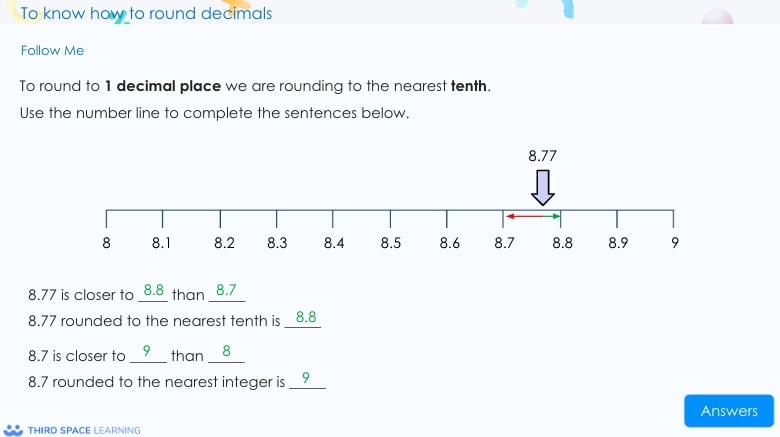
Pupils look at rounding decimals to the nearest whole or the nearest tenth.
They are encouraged to use number lines to help understand how to round the numbers.
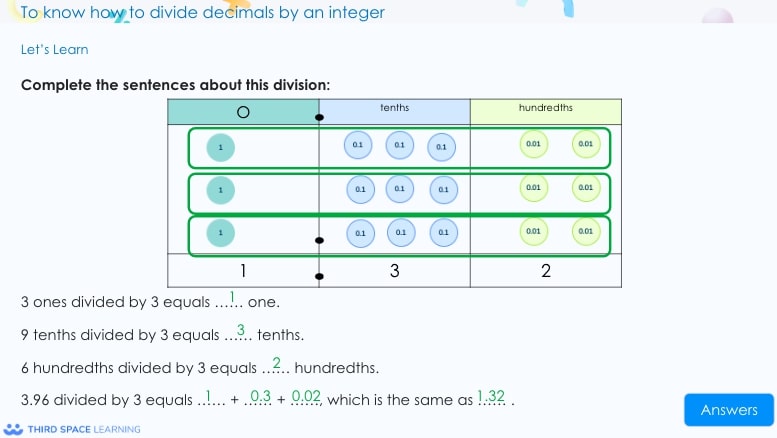
Pupils use concrete resources to help them understand how to divide decimals by an integer.
Example year 6 decimals questions
1. Round 3.765 to 2 decimal places
Answer: 3.77
2. Divide 32.7 by 10, 100 and 100
Answers:
32.7 ÷ 10 = 3.27
32.74 ÷ 100 =0.327
32.74 ÷ 1000 =0.0327
Fractions, decimals and percentages Year 6
In this block, pupils build upon the concepts learnt in Year 5; exploring and using equivalence between fractions, decimals and percentages. At this stage, students are also introduced to the concept of calculating a percentage of an amount. Initially pupils are introduced to one-step problems, such as finding 10% of an amount. They then progress to solving multi-step problems, such as calculating 37% of an amount.
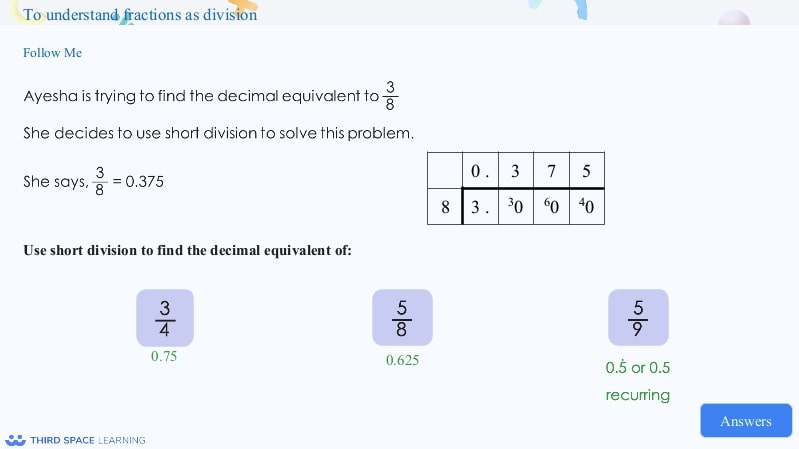
Pupils look at how to convert fractions to decimals using
different methods, such as using short division.
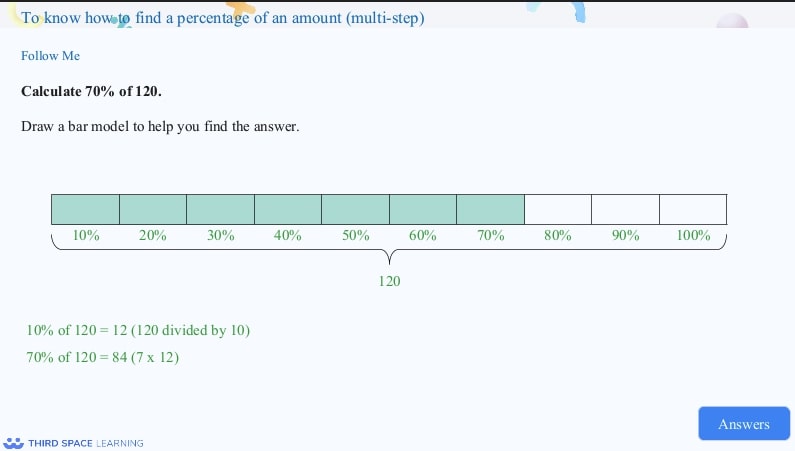
Pupils should understand what a percentage is by Year 6. They can then go on to find percentages
of amounts (both in multiples of 10 and multiples of 5).
Example year 6 fractions, decimals and percentages questions
1. Write 725257 as a decimal and a percentage
Answer: 2810010028 = 0.28 = 28%
2. Use the < > or = symbol for each question below:
410104 ______ 45%
3443 ________ 70%
620206 ______ 60%
Answer:
410104 < 45%
3443 > 70%
620206 < 60%
Area, perimeter and volume Year 6
In Year 6, pupils explore how to calculate the area of different shapes; including triangles and parallelograms. They also build on their knowledge of volume from Year 5; calculating, estimating and comparing volume of cubes and cuboids, using standard units, including cubic centimetres and cubic metres.
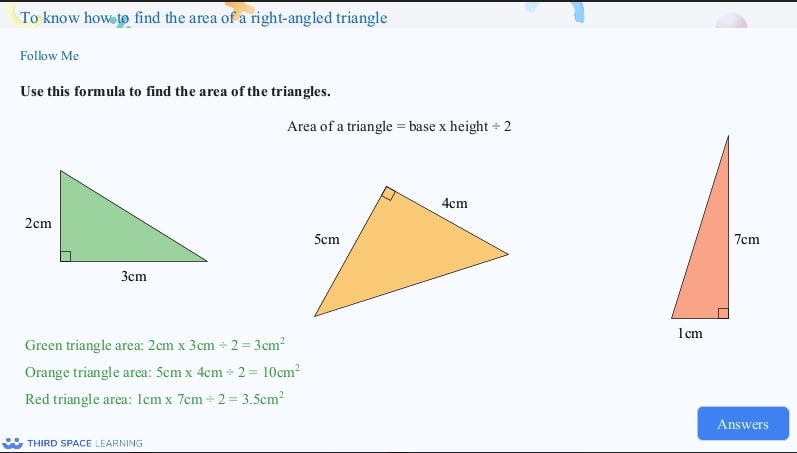
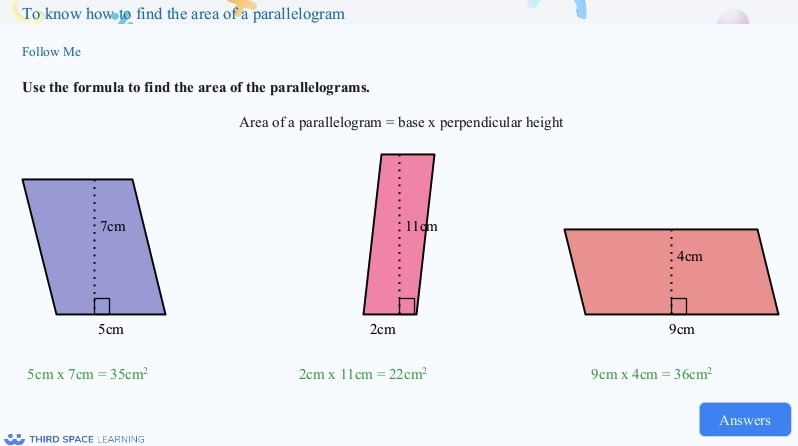
Example year 6 area, perimeter and volume questions
1. Calculate the volume of the cuboid below
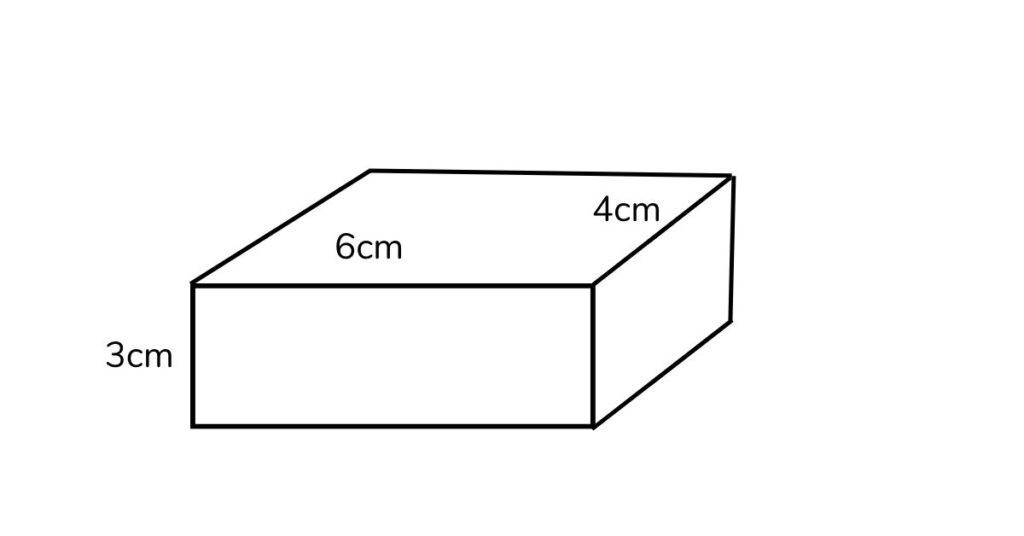
Answer: 72cm 33
2. Draw 2 different cuboids with a volume of 60cm 33
Answer: 2 x 5 x 6 and 3 x 4 x 5
Statistics Year 6
In Year 6, pupils continue to focus on drawing and interpreting line graphs. They are also introduced to pie charts for the first time, learning how to interpret and construct them. Students also learn how to calculate and interpret the mean as an average.
Read more: Mean median mode
Example year 6 statistics questions
1. A man walks up a hill. It takes him 15 minutes to reach 800m. He then stops for 10 minutes before walking back down. It takes him 10 minutes to reach the bottom of the hill. Plot the graph to show what happens.
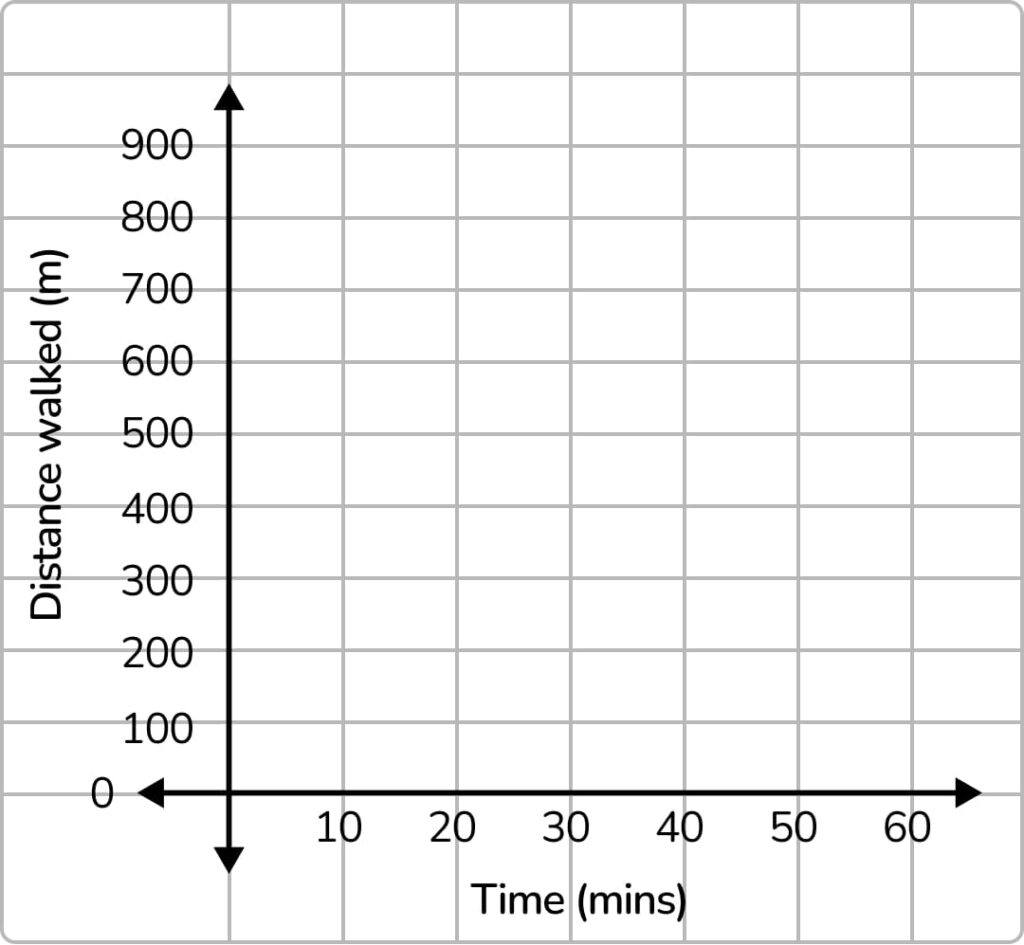
Answer:
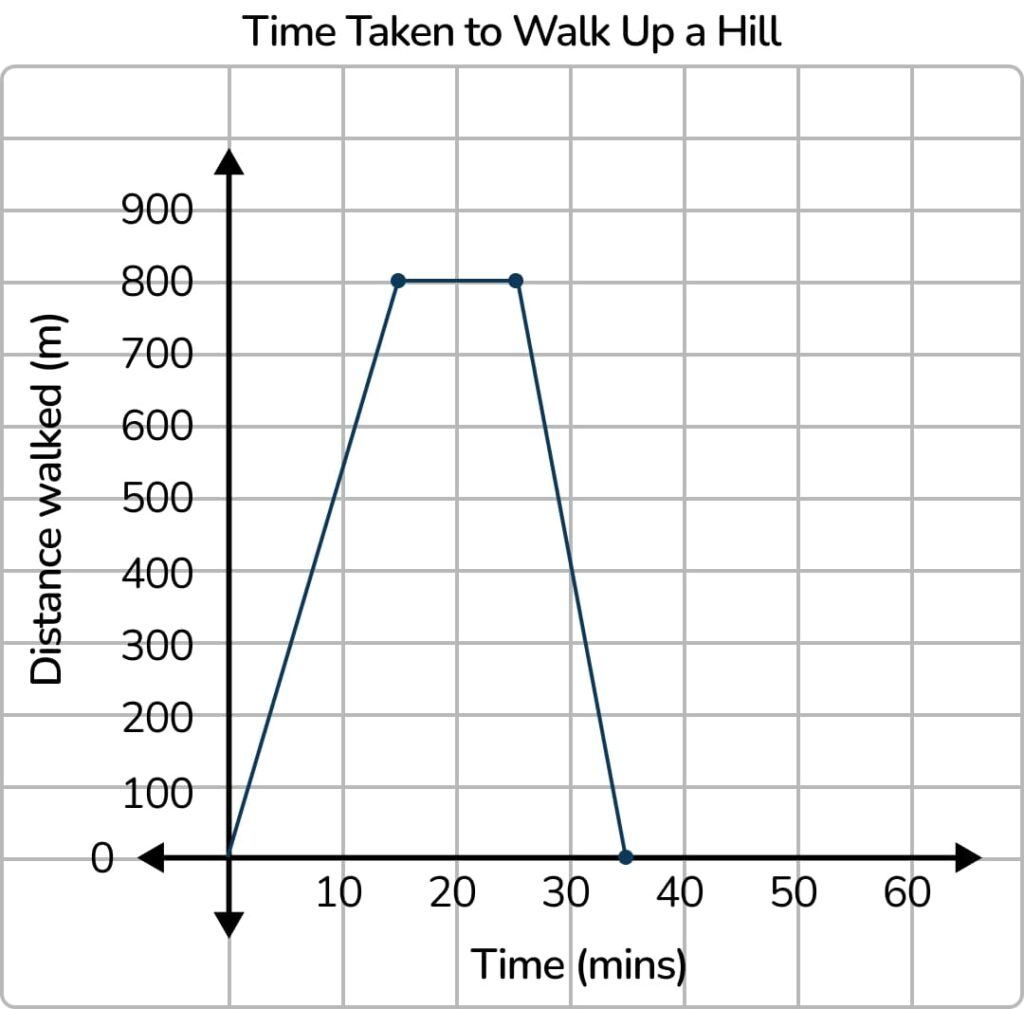
White Rose Maths Year 6 summer term
In the summer term, Year 6 focuses on shape; position & direction, followed by themed projects, consolidation and problem solving.
Shape Year 6
Pupils build on their understanding of shape and properties of shape; drawing 2D shapes, using given dimensions. Students also learn to recognise, describe and build simple 3D shapes, including making nets. In Year 6, there is a significant focus on angles, with pupils learning how to calculate a range of angles, including: vertically opposite angles; angles in triangles, quadrilaterals and other polygons.
Example year 6 shape questions
1. Calculate the size of angle a below:
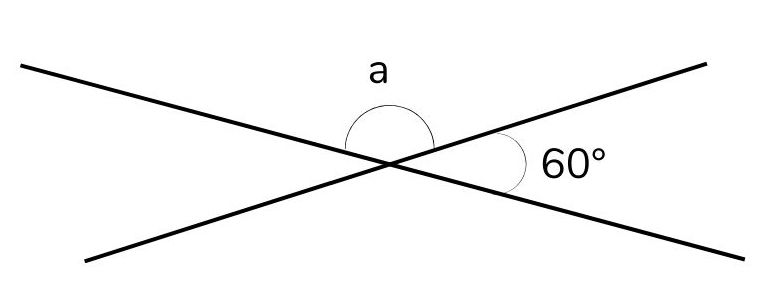
Answer: Angle a = 180°
2. A triangle has the angles: 45° and 65°. Calculate what the 3rd angle will be:
Answer: 70°
Position and direction Year 6
In Year 4 and 5, pupils learn to plot coordinates in the first quadrant. In Year 6, pupils progress to reading and plotting points in all four quadrants and solving problems with coordinates. Students also draw and translate simple shapes on the coordinate plane, and reflect them in the axes.
Example year 6 position and direction questions
1. On the grid below, plot the following coordinates. What shape do they make?
(4,3) (-2,3) (-2, -2) (3,-2)
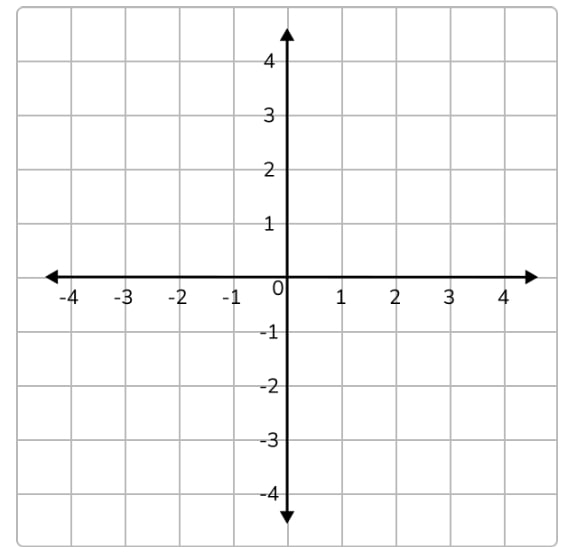
Answer:
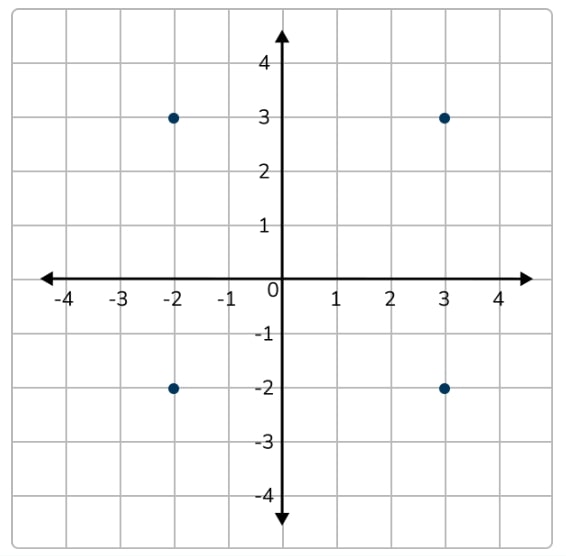
They make a square
